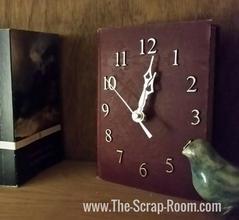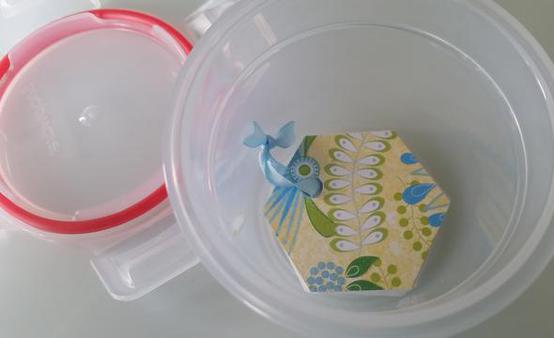Supplies and Materials:
-Large Square or Rectangle Punch (optional)
If you have a binding machine, chances are good you also have little leftover bits of spiral binding from projects past. It's time to put them to good use -- Along with your paper scraps. (You DO save your paper scraps, right? Waste not, want not! I keep several bins and sort them by size and color.)
Okay, grab your scraps and lets get started! Choose what size books you'd like to make and cut your white cardstock to those dimensions. Use your colored or printed cardstock to cut out a front and back cover. I like to make my cover pages slightly bigger than the inside pages so that on the opening side of the book, the covers overhang and protect the edges of the inner pages. If you're looking for a fast and efficient way to cut your pages, think about investing in a Zutter Dreamkuts machine or something similar. It will cut your pages accurately in a fraction of the time as a craft knife and straight edge or many paper trimmers.
Whether you're into letterboxing or you just want some tiny pads to practice your sketches or literary skills, these little books are perfect -- and fairly easy to make!
Archival Quality Art Journals
For best results, use only acid and lignin free paper and supplies. This will help preserve your book, making it last longer. This is especially important for letterboxing books since they will be up against tougher elements, pass through lots of hands, and probably hold a variety of inks -- some of which may not be acid free. So be sure to use high quality products when constructing your books to ensure their longevity.
Follow the instructions for your binding machine to punch and assemble the books. Add a personal touch by decorating the covers in the same theme as your letterbox or other project.
If you plan to hide the little 4 oz tapered bottom Lock N Lock containers, you'll need to make some pretty tiny books. For these containers I like to make small hexagon shaped books with my Fiskars 1.75" Hexagon punch. You can also use a 1.5" Round punch. Use a standard hole punch and ribbon for the binding. The pages fit perfectly in the container and don't waste precious space on a metal, spiral binding.
Up for a bigger challenge? Our Stamp-in-a-Book video tutorial will teach you how to add a hidden compartment in your book to conceal your stamp! This concept is great for both personal journals (you'll always have your signature stamp right at hand when you pull out your book to record your finds) as we all logbooks for letterboxes placed out in the field.
If you enjoyed our page or found value in it, we'd love it if you'd give us a thumbs up or a share on Facebook or Pinterest!
You might
also enjoy...
Disclaimer: Please note that some of the links in this post may be affiliate links or ads. There is no additional cost to you, but The Scrap Room will earn a small commission should you choose to purchase through those links. Click here for my full disclaimer. Thank you for your support.
Here are some inspiring ways you might use a small archival-quality journal or book:
1. Creative Idea Journal
Use this journal as a go-to place for sketching out creative ideas, jotting down project plans, or collecting inspiring quotes. Keep it by your crafting space to spark fresh ideas whenever creativity strikes!
2. Mini Art Journal
Fill each page with small paintings, doodles, or mixed-media designs. This journal becomes a portable canvas for experimenting with new techniques and colors, giving you a place to freely express your artistic vision on a small scale.
3. Gratitude & Reflection Journal
Make it a daily practice to jot down things you're grateful for or reflect on moments that brought joy. Adding small sketches, stickers, or doodles can make this journal a heartwarming keepsake to look back on in years to come.
4. Craft Project Log
Document each completed craft project with details like materials used, techniques tried, and any tips or lessons learned. This log will be a handy reference to track your progress and inspire new projects as your skills grow.
5. Memory Keepsake Book
Collect special mementos like ticket stubs, mini photos, or pressed flowers and pair them with short notes about each memory. This little keepsake book becomes a treasure chest of moments you’ll want to remember forever.
6. Garden & Nature Journal
For green thumbs and nature lovers, use the journal to track plant growth, document seasonal changes, or sketch favorite flowers and plants. This can be a calming practice and a way to deepen your connection with nature.
7. Personal Growth & Goals Journal
Write down personal goals, achievements, and reflections on growth. Include mini vision boards, goal lists, and positive affirmations that motivate and keep you moving toward your dreams.
Creating your own small archival-quality journal is a fulfilling project that combines artistry with a personal touch. Not only are these handmade books beautiful to look at, but they also offer a lasting space to capture memories, ideas, or creative inspiration. Whether you use them for sketching, jotting down thoughts, or preserving meaningful moments, these journals are a gift to yourself that can be enjoyed for years to come. So gather your materials, let your creativity flow, and make a journal today that will become a cherished keepsake filled with whatever brings you joy.












